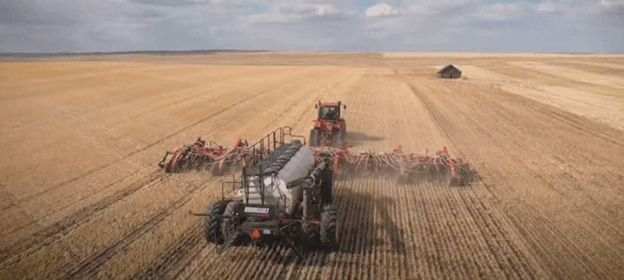USDA Predicts More Corn, Less Wheat and Soybeans in 2025
The U.S. Department of Agriculture’s latest Prospective Plantings report, released April 1, 2025, signals a shift in the crop landscape for the coming year. American farmers are expected to plant 95.3 million acres of corn, an increase of 1.7 million acres from 2024 and the fourth-largest March estimate in U.S. history, surpassed only by 2012’s record of 97.3 million acres. This expansion, notably concentrated in Nebraska, Iowa, Kansas, and North Dakota, suggests a confident outlook on corn profitability, likely influenced by stronger ethanol demand and export expectations.
By contrast, soybean planting is forecast at 83.5 million acres, down 4% from last year. The decrease aligns with concerns about global oversupply and tighter margins. According to USDA, 23 out of 29 reporting states are reducing or maintaining current soybean acreage, reflecting cautious producer sentiment.
But perhaps the most unexpected change came in wheat acreage, which is projected to fall to 45.4 million acres—down 2% year-over-year and marking the second-lowest wheat planted area since 1919. Within this total, winter wheat is estimated at 33.3 million acres, including 23.6 million of hard red winter, 6.09 million of soft red winter, and 3.66 million of white winter wheat. Spring wheat is also down 6%, with hard red spring wheat accounting for 9.4 million acres, and durum wheat falling to just 2.02 million acres.
Regional Shifts Highlight Market Complexity
In Montana, wheat remains king. Total wheat acreage is projected at 5.21 million acres for 2025, with winter wheat up 18% to its highest level since 2015. Yet, durum and spring wheat are both sharply down. Lentils continue their strong momentum, expected to hit a record 820,000 acres, while chickpeas (especially large varieties) jump 23% to 270,000 acres. Meanwhile, crops like barley (-11%), canola (-23%), and dry peas (-7%) are seeing reductions.
Wyoming, on the other hand, is trending downward across most major crops. Corn is expected to drop 18% to just 70,000 acres—the lowest since 1970—and barley could hit a 99-year low. Only dry hay is expanding, likely a strategic move toward lower-input crops amid uncertain grain markets.
Global and Market Context
Internationally, global grain markets are adjusting to softening Chinese demand, weather volatility in South America, and continued instability in the Black Sea region. The FAO’s March 2025 Crop Prospects and Food Situation Report notes that wheat production in Europe is expected to fall due to excessive winter rainfall, while Brazil’s soybean crop is still recovering from early-season drought.
Additionally, input prices—especially for nitrogen fertilizers—remain elevated, which may explain the shift toward corn in high-yield regions with access to cheaper, localized nutrient sources.
According to Rabobank’s Q1 2025 Grain and Oilseed Outlook, the projected corn-soybean ratio favors corn, especially in areas with established ethanol infrastructure and lower logistics costs. However, analysts caution that increased corn planting may not translate into higher profits unless yields remain above trend and global demand stabilizes.
The USDA’s 2025 acreage forecast paints a picture of a reshuffling U.S. crop map: corn is rising on optimism, wheat is falling under pressure, and soybeans face a cautious pullback. For farmers, agronomists, and ag-sector decision-makers, these shifts underscore the need for adaptive strategies, market monitoring, and localized crop planning in a year that promises both opportunity and uncertainty.
Error




